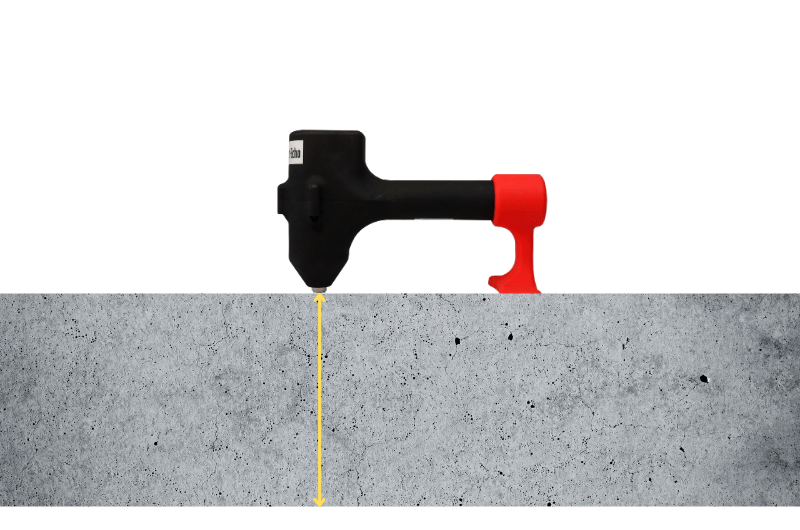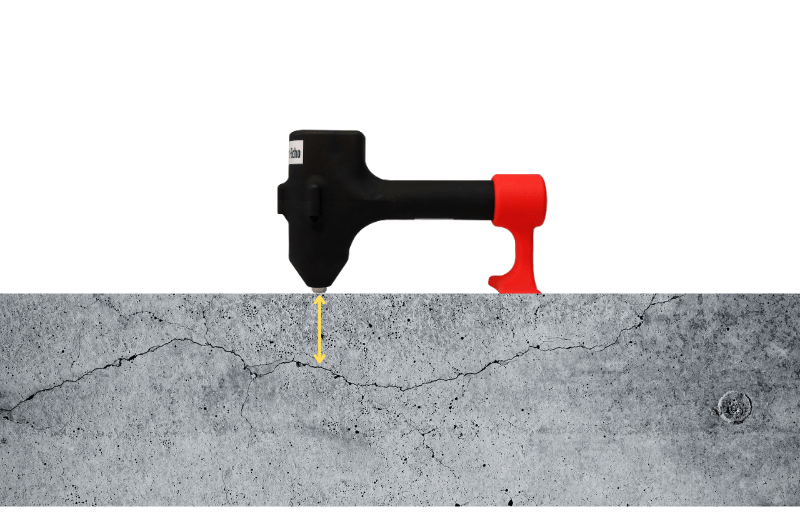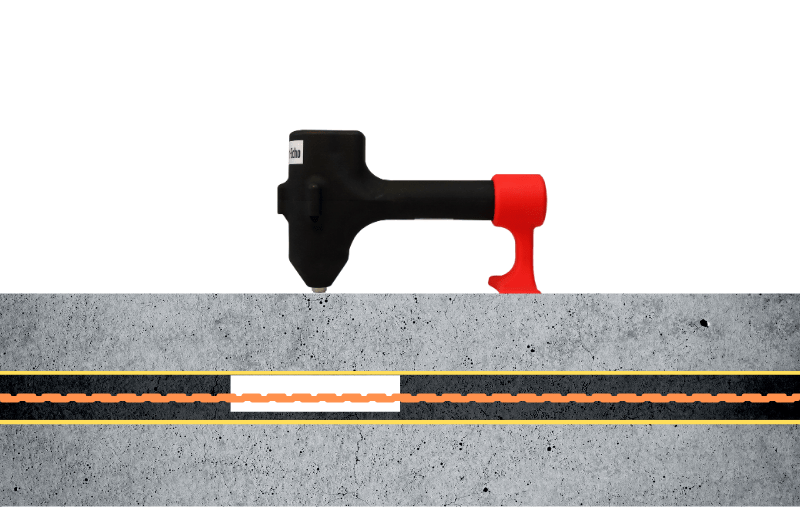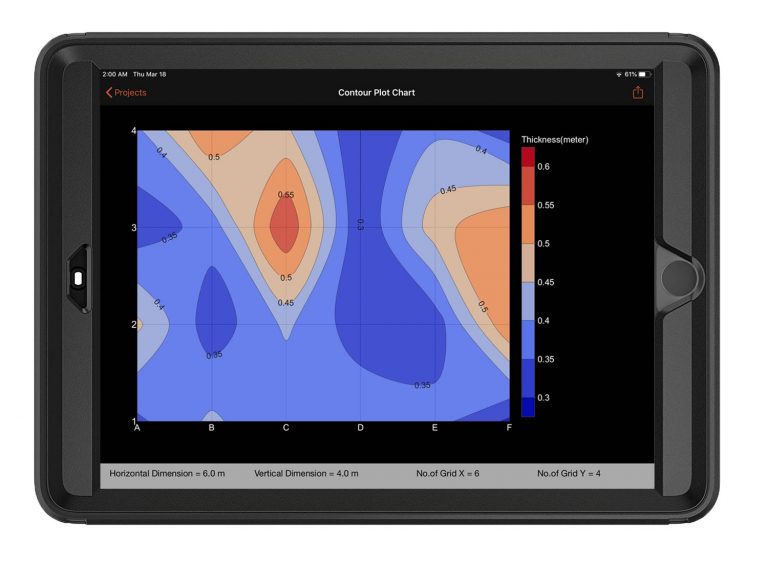The Most Advanced Impact-Echo Testing Device
UNIQUE FEATURES
FPrimeC Impact-Echo is an innovative wireless impact-echo testing instrument for integrity testing of thin concrete members.
The first and only wireless Impact-Echo Testing Device. Enjoy Enhanced Mobility, Portability, and Functionality.
Smart At Core! With advanced machine learning feature, Picking the right Peak is easier than ever
Unique Ecosystem for Your Future Needs. Access Anytime, from Anywhere
APPLICATIONS
Impact-Echo can be used for plate-like concrete structural members such as slabs, slab-on-grade, concrete pavements, decks, walls and tunnel linings.

Estimate the Thickness of thin concrete slabs and walls:
* Bridge Decks
* Parking Garage Slabs
* Tunnel linings

Identify Location and Extent of Voids and Delamination:
* Bridge Decks
* Parking Garage Slabs

Detect Voids in Grouted Tendon Ducts:
* Post-Tensioned elements
How Does It Work ?
Impact-Echo uses the principles of stress-wave propagation in plate-like elements to study the internal voids and defects in concrete members. The testing procedure is completed in three simple steps.
✅ A small ball impactor is used to strike the test point.
✅ Collect the echoes reflected from boundaries, voids, and delamination
✅ Analyze the test results (time domain and frequency domain), and develop contour maps of sub-surface defects.


Technical Specifications
Impact-Echo – Redifined
- Test Method: Impact-Echo (Method A)
- Display: Any compatible Apple® iPad
- Memory: 32 GB (or more depending on the Apple iPad model)
- Output: Built-in PDF, CSV, Screen Snapshots (PNG)
- Wireless Connectivity: BLE 4.0
- Dynamic Range: ±50 g, peak
- Sensitivity: 100 mV/g
- Frequency Response (±3dB): 0.6 – 25,000 Hz
- Sampling Frequency: 507 kHz
- Sampling Resolution: > 12bit
- Battery Life: +12 hrs on single charge
✅ ASTM D 1383 : Standard Test Method for Measuring the P-Wave Speed and the Thickness of Concrete Plates Using the Impact-Echo Method
✅ ACI 228.2R-13 : Report on Nondestructive Test Methods for Evaluation of Concrete in Structures
📙 Lacroix, Francis, “Non-Destructive Condition Assessment of Concrete Slabs with Artificial Defects Using Wireless Impact Echo” Read Here
📙 Francis Lacroix, Martin Noël, Farid Moradi, Hamed Layssi, Thomas Tingson, “Non-destructive condition assessment of concrete slabs with artificial defects using wireless Impact Echo”, Submitted to the ASCE Journal of Performance of Constructed Facilities” Under Review
📙 TRB, (2012) “Nondestructive Testing to Identify Concrete Bridge Deck Deterioration” Read More





